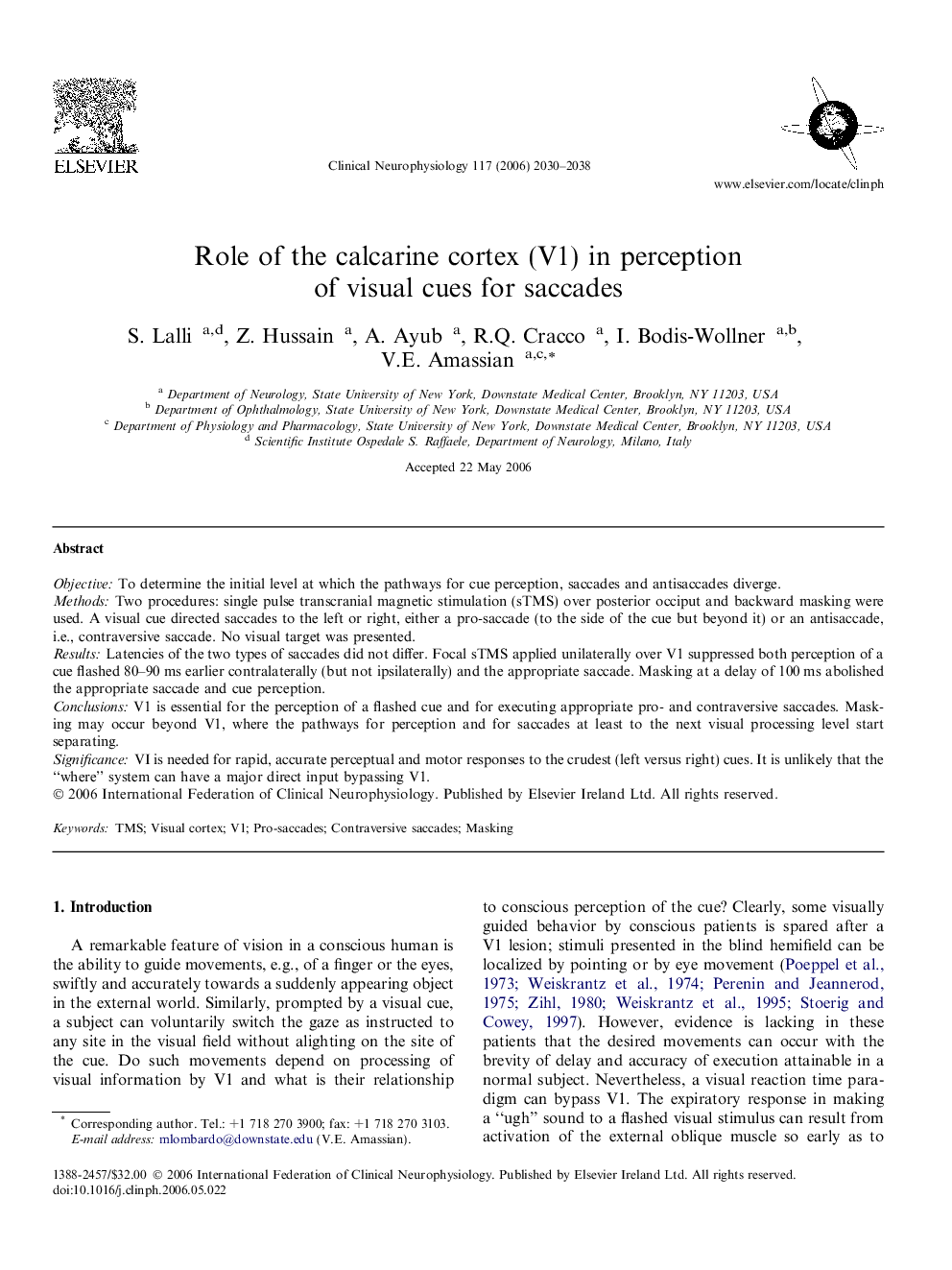| Article ID | Journal | Published Year | Pages | File Type |
|---|---|---|---|---|
| 3047817 | Clinical Neurophysiology | 2006 | 9 Pages |
ObjectiveTo determine the initial level at which the pathways for cue perception, saccades and antisaccades diverge.MethodsTwo procedures: single pulse transcranial magnetic stimulation (sTMS) over posterior occiput and backward masking were used. A visual cue directed saccades to the left or right, either a pro-saccade (to the side of the cue but beyond it) or an antisaccade, i.e., contraversive saccade. No visual target was presented.ResultsLatencies of the two types of saccades did not differ. Focal sTMS applied unilaterally over V1 suppressed both perception of a cue flashed 80–90 ms earlier contralaterally (but not ipsilaterally) and the appropriate saccade. Masking at a delay of 100 ms abolished the appropriate saccade and cue perception.ConclusionsV1 is essential for the perception of a flashed cue and for executing appropriate pro- and contraversive saccades. Masking may occur beyond V1, where the pathways for perception and for saccades at least to the next visual processing level start separating.SignificanceVI is needed for rapid, accurate perceptual and motor responses to the crudest (left versus right) cues. It is unlikely that the “where” system can have a major direct input bypassing V1.
